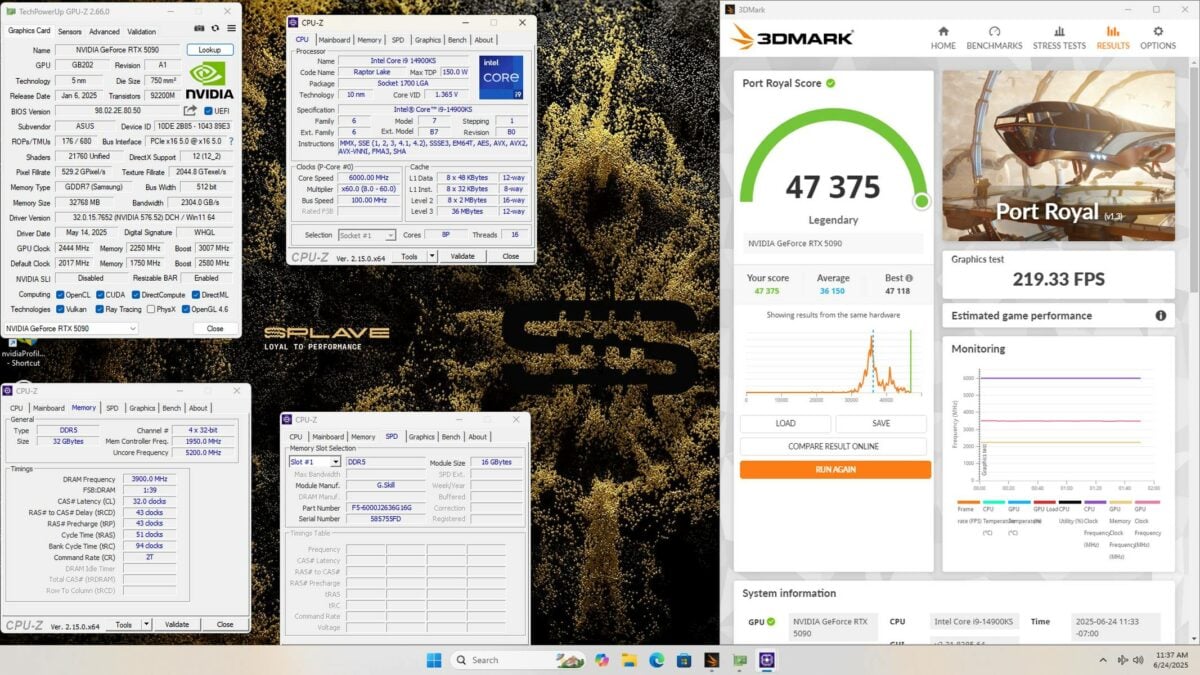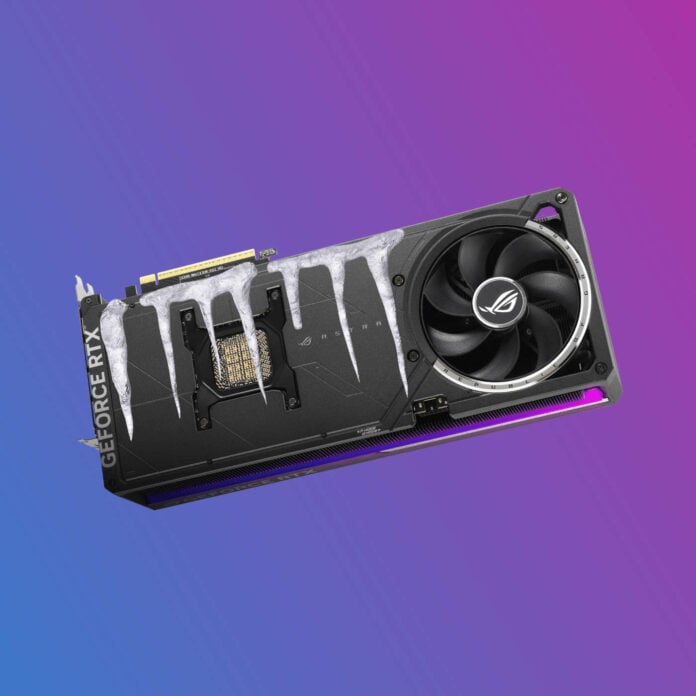Renowned overclocker Splave has achieved yet another world record, this time featuring Asus’s flagship ROG RTX 5090 Astral OC graphics card. Thanks to extreme cooling and overclocking, the GPU was able to claim first place in 3DMark Port Royal, putting it way ahead of stock performance.
With the help of Liquid Nitrogen cooling and a special BIOS, Splave managed to reach 47,375 points in the Port Royal test using RTX 5090. To get a feel of this exceptional result, the average score submitted by RTX 5090 owners sits around 36,150 points, making Splave’s GPU 31% faster. This achievement is especially notable compared to frequency records, as the card had to finish a bench run without any errors. In other words, this is real performance, as long as you can keep the Nitrogen flowing.
To make this possible, the GPU was overclocked to 2,444MHz base and 3,007MHz boost – reported through GPU-Z, up from its stock 2,017MHz and 2,580MHz. Though a 16% boost is already a nice bump over the Astral’s stock configuration, the gap gets even wider against Nvidia’s official 2,407MHz boost frequency, which puts Splave’s overclock nearly 25% higher. It’s this frequency that allowed Splave to claim first place in all five HWBOT GPU rankings.
The rest of the system was comprised of last-gen’s flagship Intel Core i9-14900KS plus 32GB of DDR5-7800 memory. In case you were wondering why not use the latest Core Ultra 285K, well, Splave has indicated during a video with Linus Tech Tips that a 14900 can net about a thousand more points compared to Ryzen 9 9950X3D. When you are chasing the highest scores, Intel seems to be the go-to option.

Splave’s achievement dethrone’s OGS, who held first place for about a day using RTX 5090D. Unlike RTX 4090D, RTX 5090D doesn’t carry a cut-down GPU, mainly differing from the regular RTX 5090 in its AI capabilities. Interestingly, though OGS’s Galax RTX 5090 HOF supports dual 16-pin power, the card used for the overclock had only one header installed.
Regardless of who is temporarily holding the crown, congratulations on this impressive achievement. Another show of the dormant capabilities of current silicon, which finds itself constrained by limited heat and power envelopes.


